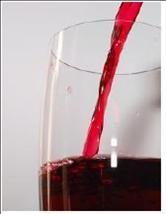Ah, election season in Ohio. I watched the 2004 primaries from overseas and tried to answer my Spanish friends' questions about America's political leanings: "But how could people possibly re-elect Bush?" I told them they had never been to Ohio.
The Economist has started its series on swing states with Ohio. It only took three paragraphs for the infamous I-71 billboards to make their appearance:
In the Cup-o-Jo Cafe in Columbus, the state capital, 20-somethings sit around eating vegetarian food and talking about how much Mr Obama inspires them to hope for a better world. Out in the rural areas the signs on the road tell a different story—“Hell is real,” reads one, and then, a few miles later, “Repent!”.
It's unclear what the presence of fire and brimstone on highway billboards means for the 2008 elections - we can revisit Issue 1 some other time. Here, The Economist does a good job of capturing in a short article both the usual issues (what do the Ohio voters care about? is Obama too "coastal elite" for the state?) and the more interesting ones at the present moment (changes in both parties' strategies since 2004, challenges for both).
I think The Economist has actually used the word "elite" in the promotional material it sends to my house from time to time, so I find it the whole discussion of Obama's elitism a bit ironic. Any magazine which runs the following sentence should probably not be debating whether a public figure is perceived as too "airy-fairy" for office:
In 2004 the Democrats argued, with some evidence, that Ken Blackwell, the staunchly conservative secretary of state, was not overzealous in ensuring that all Democrats could exercise their right to vote.
Then again, The Economist isn't trying to get elected in Ohio this fall.
* * * * * * * * * * * * * *
Full disclosure: I should admit that I love The Economist not just because of its use of hard data and balanced reporting but also because of its writing.
Sunday, August 3, 2008
Subscribe to:
Posts (Atom)
